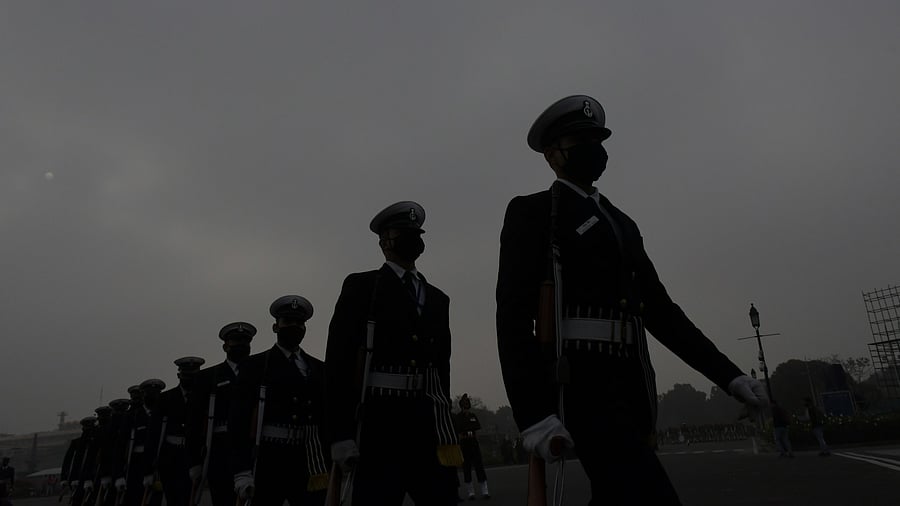
Indian soldiers participate in a rehearsal for Republic Day parade
Credit: iStock Photo
Recently, I stood among thousands of Vietnamese in Vietnam’s Ho Chi Minh City, surrounded by red flags fluttering like living flames against the clear blue skies, witnessing a moment of living history. Vietnam was marking the 50th anniversary of the end of a war, a half-century since the fall of Saigon in 1975, transforming itself into a tableau of national pride, filled with the sounds of drums and marching boots.
As a child growing up in Delhi, I remembered India’s Republic Day parade, a regular fixture in my calendar. My father, an ardent believer in ceremony, had made attending the parade a family ritual, and I still remember being perched on his shoulders, watching tanks roll past, tricolour balloons ascend, and the brass bands thunder in unison. I would return home flush with patriotic fervour, my brother re-enacting the march past in our living room, his arms swinging too high, his chest puffed out too much!
Half a world away, the mood in Vietnam was qualitatively different, sombre yet proud with an undertone of solemn remembrance. Not just a military display; this was a nation paying homage to hard-won peace. Vietnamese veterans with weathered faces lined the streets, medals catching sunlight, their eyes misty with the weight of what they must have endured. What struck me most was the discipline and restraint. There was no overt display of patriotism, no aggressive choreography, just a reminder that victory required hard, purposeful work in the future.
As I watched the parading columns of students, soldiers, and the paramilitary, I couldn’t help realising that India’s Republic Day presented a similar spectacle of scale and diversity, and like Vietnam’s 50th anniversary parade, it was steeped in the memory of a conflict that birthed its modern identity. Both are gigantic exercises with tableaux and a choreography of movement replete with march-pasts and memories. My father, after a Republic Day parade, had once told me, “What we show on the streets is who we hope to be.” At
that time, his words seemed mere sentimental patriotism, but now, standing amidst strangers, his words made sense. Hope lies not in forgetting but in choosing what to remember and how to carry forward.
As the parade was drawing to a close and the crowd dispersing, I noticed a small boy standing at the kerb, waving a flag too large for him. His grandfather stood behind him, one hand resting lightly on the boy’s shoulder. It was a scene that could have come from Kartavyapath or Raisina Hill; a reminder that despite different borders and histories, we are all alike.
Watching this parade in Vietnam was a deeply poignant experience. It stirred my memories in myriad ways. Emotions rained down on me not from the spectacle alone, but from a quiet recognition that the parade personalised patriotism. I found myself humming a familiar tune: Lata Mangeshkar’s sombre and patriotic voice echoing a republic’s yearning: Ae mere watan ke logon.